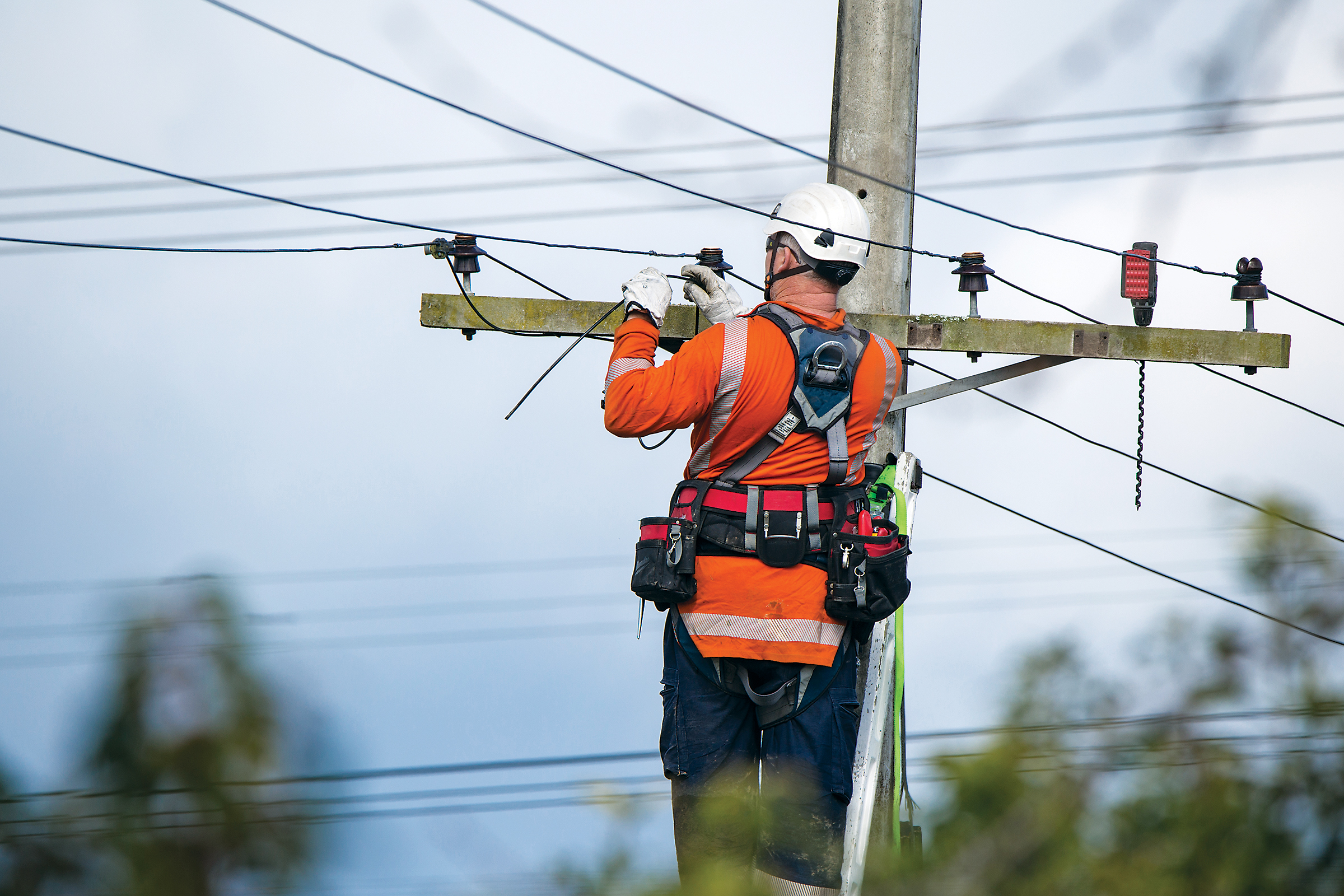
Powerline contacts jump more than 300% in Ontario: ESA outlines myths and facts around dangers
May 15, 2023
By
OHS Canada

Photo: Adobe Stock
Since 2019, there has been a 310% increase in powerline contacts by the general public in Ontario — a number the Electrical Safety Authority (ESA) calls a “staggering increase.”
It’s Powerline Safety Week in Ontario (runs May 15 to 21), and the ESA is using it as an opportunity to bust myths around the deadly hazards of powerlines.
With 19 fatalities and 1,393 overhead powerline contacts occurring between 2012 and 2021, the ESA’s mission to educate and protect Ontarians is more important than ever, it said. While many powerline contacts can be attributed to weather-related events that cause tree branches and limbs to fall on powerlines, almost a third involve accidental powerline contacts from recreational activities like tree pruning, high reach equipment and outdoor home renos.
“The danger that powerlines pose is very real, and a powerline contact can have devastating consequences in an instant,” said Patrick Falzon, powerline specialist at the Electrical Safety Authority. “We know there are many myths out there that may provide a false sense of security around powerlines, but whether you are cleaning up the yard or come across a downed powerline from a storm, there are important steps you should take to keep yourself and those around you safe.”
Myths and facts
Some of the most common myths around powerlines include:
MYTH: Downed powerline wires need to be moving or arcing if they are energized.
FACT: Always assume a downed powerline has electricity flowing through it, even if it isn’t moving. Stay back at least 10 metres (that’s the length of a school bus), call 9-1-1 and the local utility.
MYTH: Orange cover-ups on powerlines will protect workers from electrical shock.
FACT: More than 67% of construction workers in Ontario believe this or aren’t sure. This is a deadly misconception. Orange cover-ups on powerlines are used for identification purposes only and you should always remain a minimum of 3 metres away from overhead powerlines.
MYTH: If my ladder isn’t metal, it can rest on or near the powerline.
FACT: No matter what a ladder is made of, it is a possible hazard. Be safe. Keep all ladders 3 metres away from overhead powerlines.
MYTH: Wearing leather gloves or safety boots can protect from a powerline shock.
FACT: More than a third of Ontarians believe this or aren’t sure. But you should always stay at least 3 metres away from powerlines with yourself and your tools, no matter what safety gear you may be wearing.
MYTH: Your tool/ladder needs to touch a powerline to get a shock or burn.
FACT: More than 40% of Ontarians mistakenly think this might be true – it is not. Anything that comes within 3 metres of an overhead powerline – a pruning tool, the tree limb or your hand – can give you a shock, burn or kill you.
MYTH: I’m just digging a couple of feet into the ground. I don’t need to worry about underground lines.
FACT: The lines may be closer than you think, or a grading change may have happened over time. Better to be safe than sorry. For any sized dig, you must click before you dig! Contact Ontario One Call to request utility locates at OntarioOneCall.ca. It’s free, it’s easy, it’s the law.